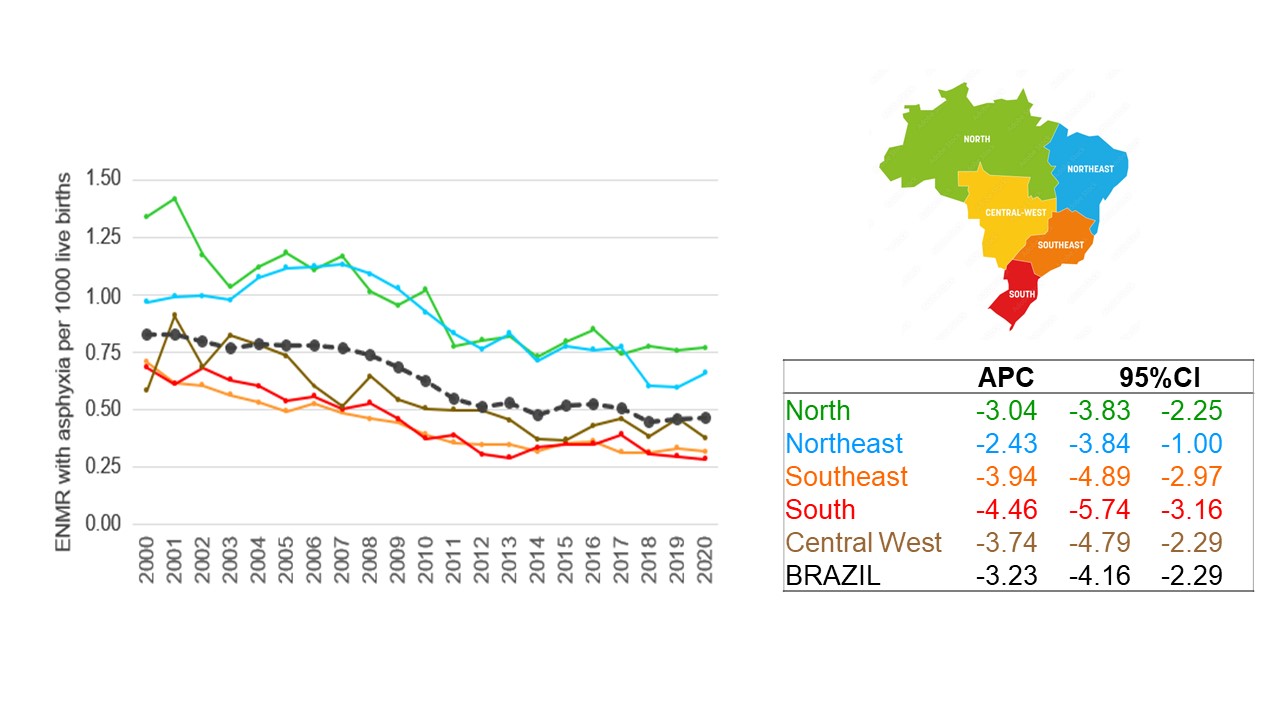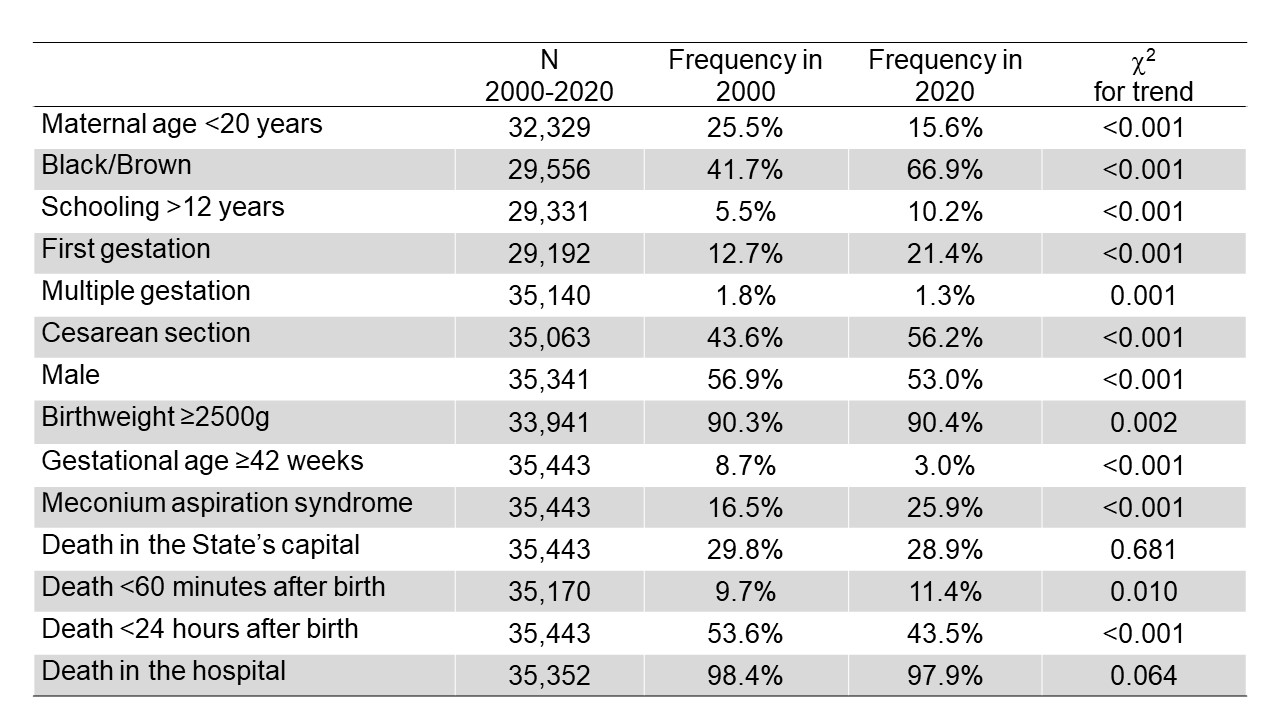Global Neonatal & Children's Health
Session: Global Neonatal & Children's Health 1
476 - Early neonatal mortality associated with perinatal asphyxia of newborns ≥37 weeks’ gestation from 2000 to 2020 in Brazil: there was a reduction, but more is needed
Friday, May 3, 2024
5:15 PM - 7:15 PM ET
Poster Number: 476
Publication Number: 476.175
Publication Number: 476.175
.jpg)
Maria Fernanda Branco de Almeida, MD, PhD (she/her/hers)
Associate Professor
Universidade Federal de Sao Paulo
São Paulo, Sao Paulo, Brazil
Presenting Author(s)
Background: Birth asphyxia is a sensitive measure of the quality of care provided in the perinatal period, both to the pregnant woman and the newborn, with high potential for preventing death through early diagnosis and treatment (Liu et al, Lancet 2016).
Objective: To evaluate the temporal and spatial trend of early neonatal mortality rate (ENMR) associated with perinatal asphyxia in newborns ≥37 weeks’ gestation in Brazil and its 5 regions, from 2000 to 2020.
Design/Methods: Population based study of live births and deaths from 0-6 days with ≥37 weeks’ gestation without congenital anomalies from 2000-2020, in Brazil. The database was built based on the live birth and death certificates according to municipality where birth and death occurred. Asphyxia was defined by ICD-10 (WHO) if intrauterine hypoxia (P20), birth asphyxia (P21) or meconium aspiration syndrome (P24.0) were found in any line of the death certificate. Prais-Winsten analysis verified the temporal trend in the ENMR associated with asphyxia in Brazil and in the 5 regions, expressed by the annual percentage change (APC). Spatial analysis (Terraview software, INPE) showed the distribution of ENMR associated with asphyxia by municipality in 4 periods: 2000-2005 (P1), 2006-2010 (P2), 2011-2015 (P3) and 2016-2020 (P4).
Results: Over the 21 years, 55,204,633 newborns were born ≥37 weeks’ gestation without congenital anomalies and 35,443 died between 0-6 days. Figure 1 shows that ENMR with asphyxia decreased annually between 2.4% and 4.5% in the 5 regions of the country during the study period, being more pronounced in the South and Southeast. The number of municipalities with ENMR associated with asphyxia >1.5 per thousand live births in Brazil decreased from 482 vs. 200 in 2000-2005 vs. 2016-2020. This reduction was observed in all regions of the country. Figure 2 shows the spatial distribution of ENMR with asphyxia in P1, P2, P3 and P4 per municipality in the five regions of Brazil. Maternal and neonatal characteristics of these deaths are shown in Table 1.
Conclusion(s): The drop in ENMR associated with perinatal asphyxia in newborns ≥37 weeks’ gestation without congenital anomalies between 2000 and 2020 was significant in the country and its 5 regions, but inequality remains: the North and Northeast in 2020 present rates above those found in 2000 in the Southeast, South and Central-west. Every day, 3 newborns ≥37 weeks’ gestation still die in the first week after birth from causes associated with perinatal asphyxia in Brazil. The death of most of these newborns could be avoided with qualified perinatal care.

Asphyxia-Spatial-Regions..jpeg

